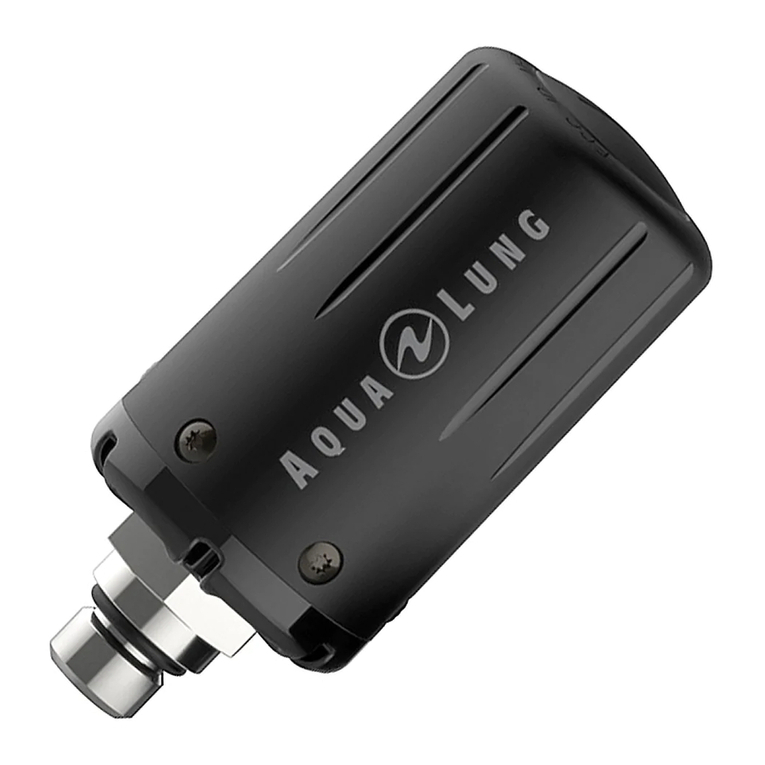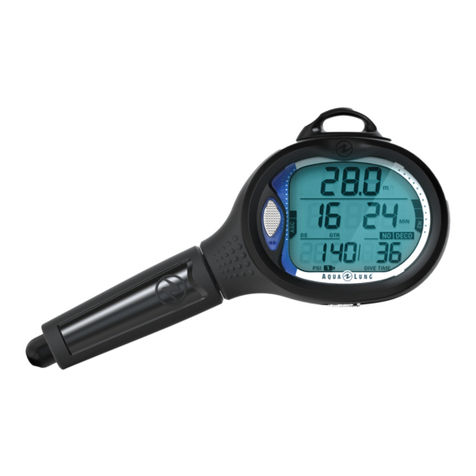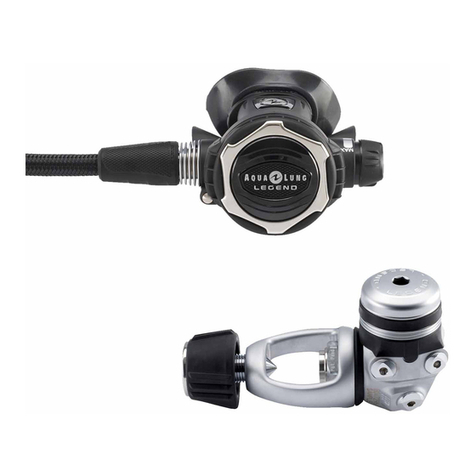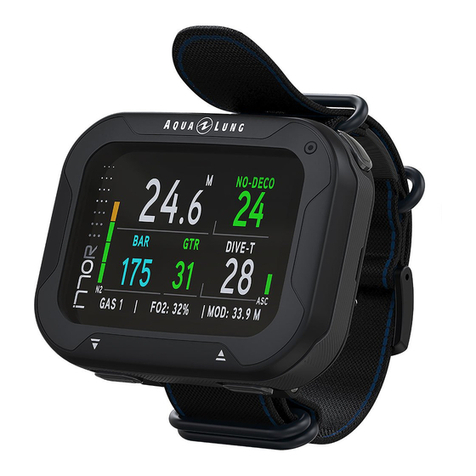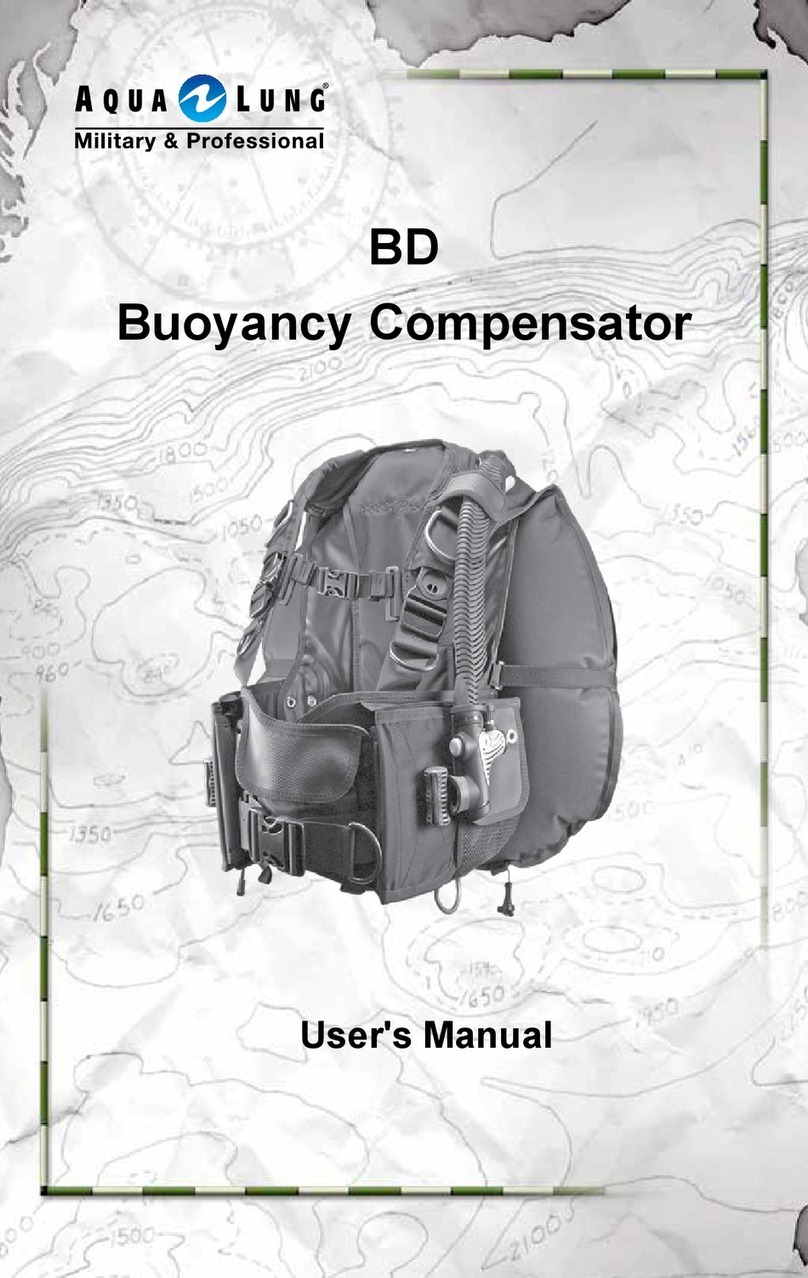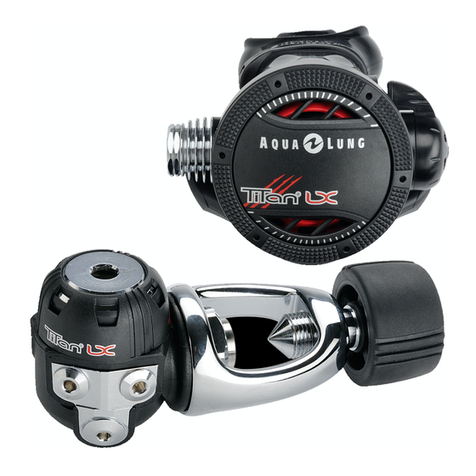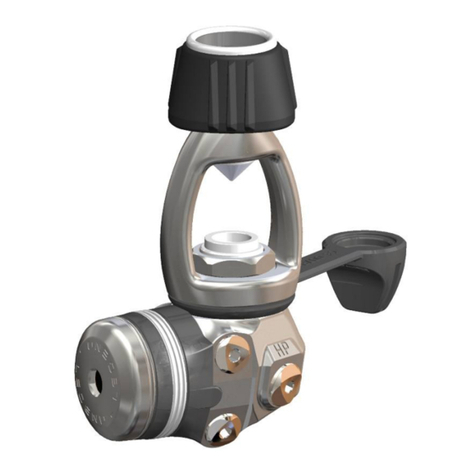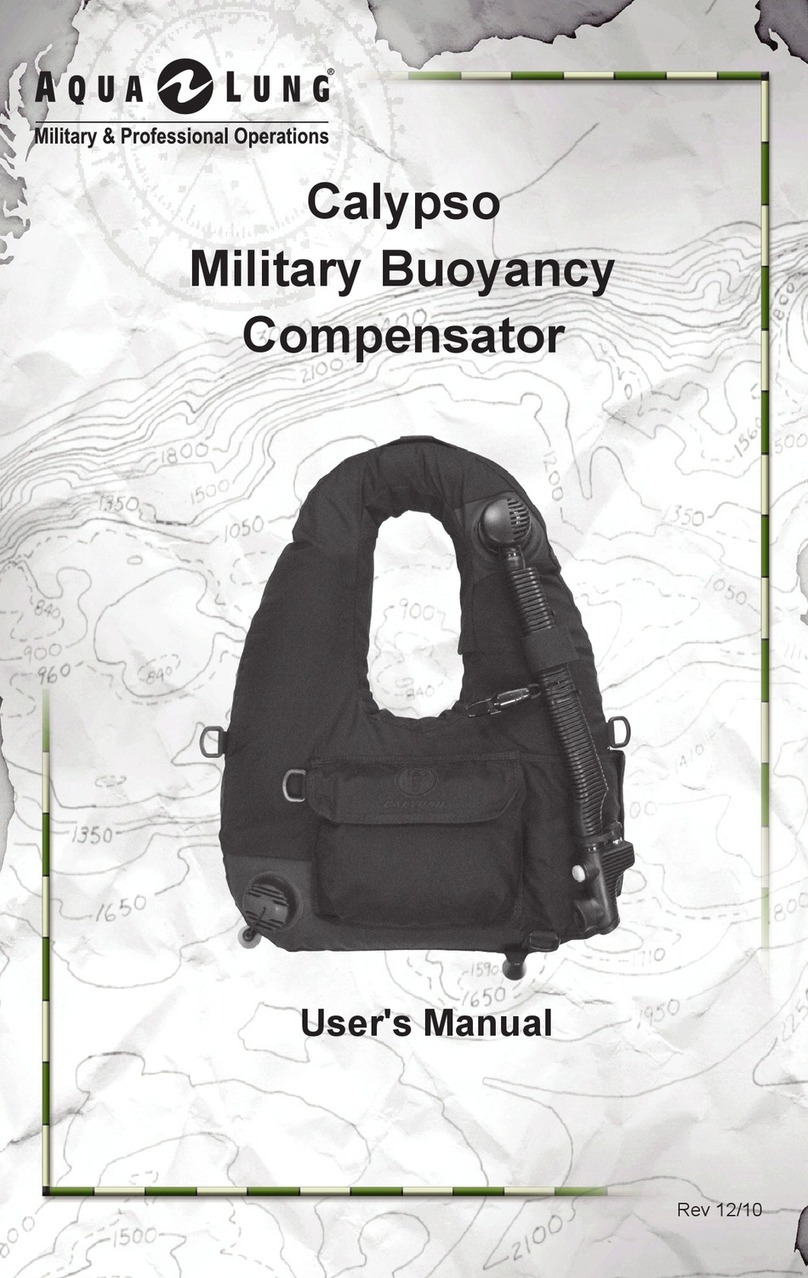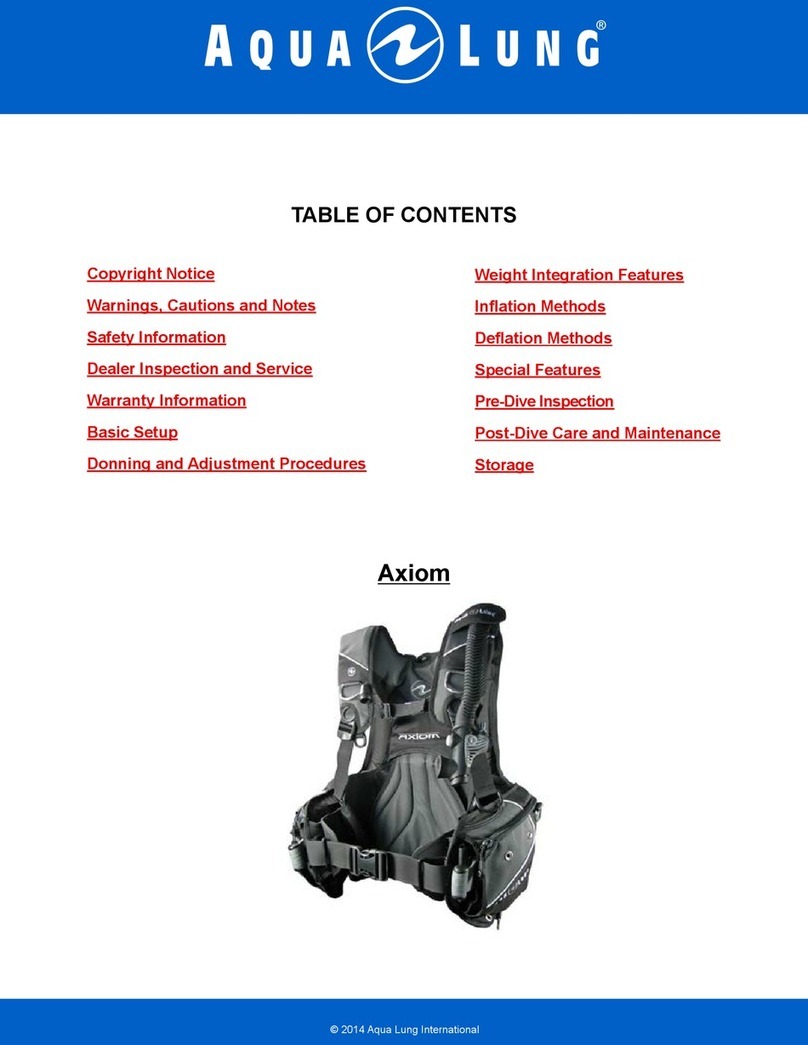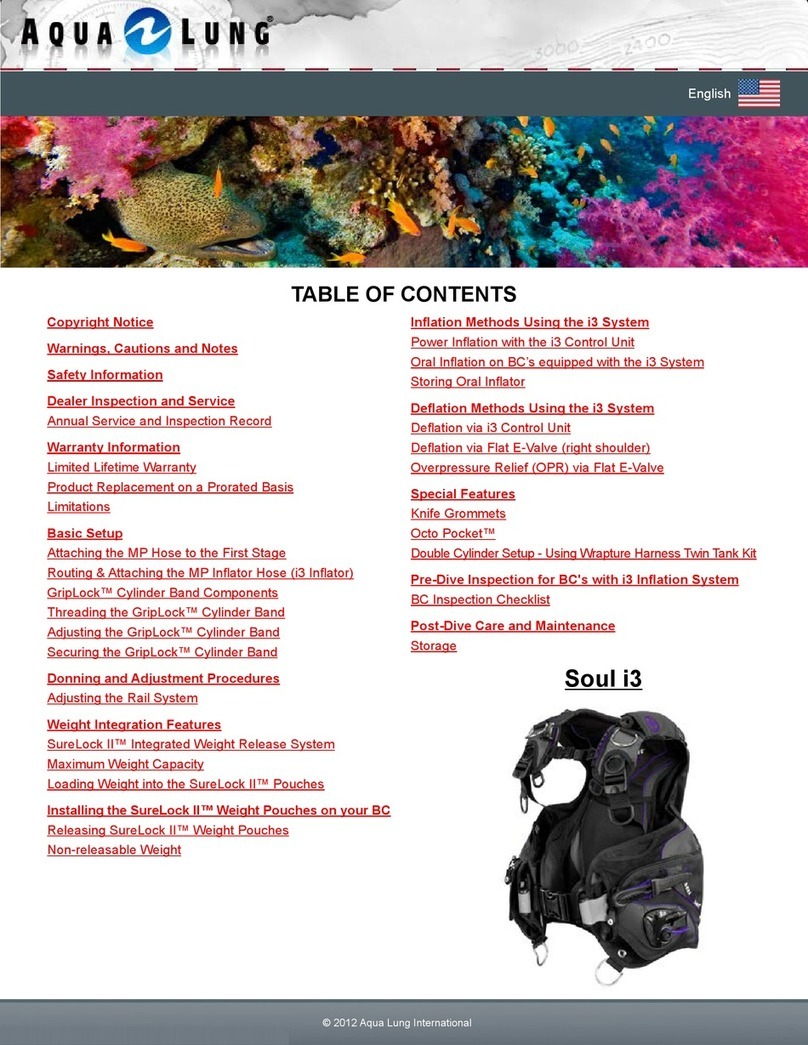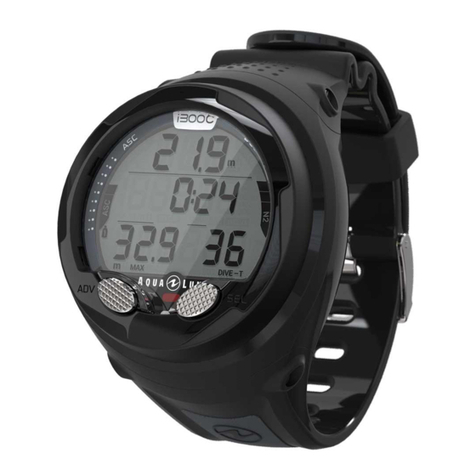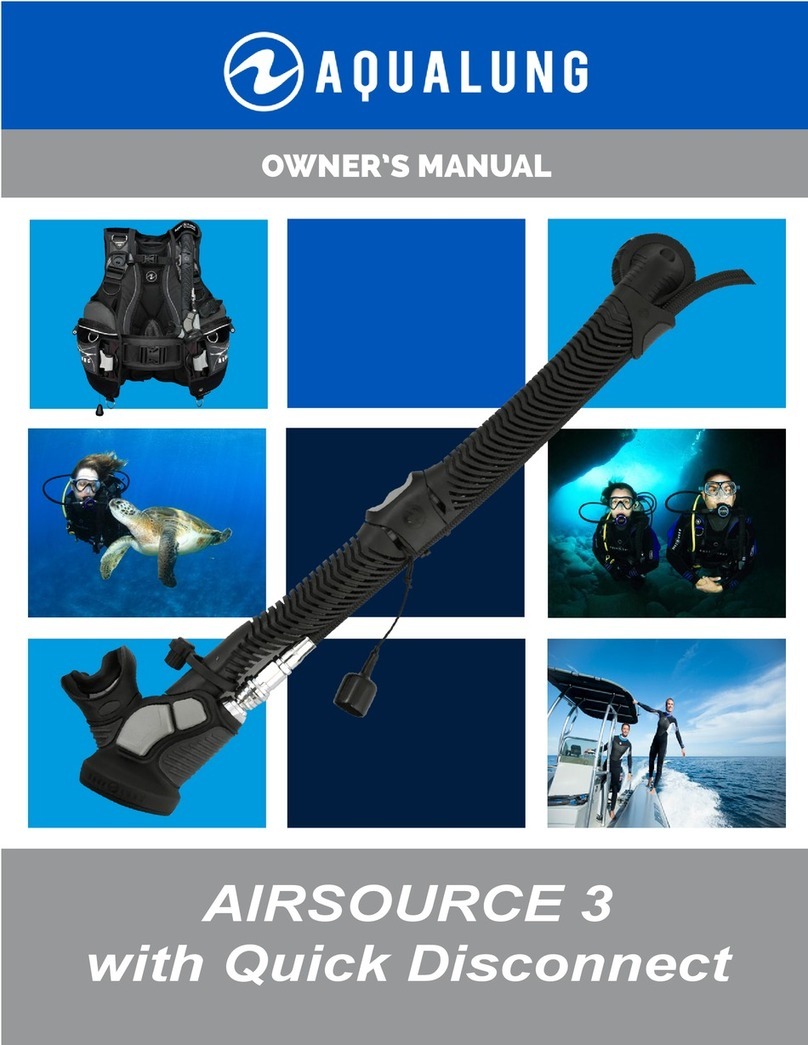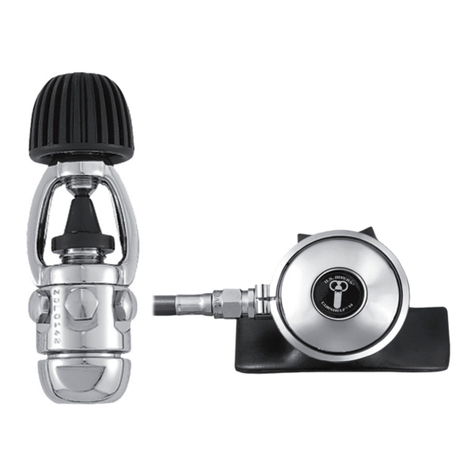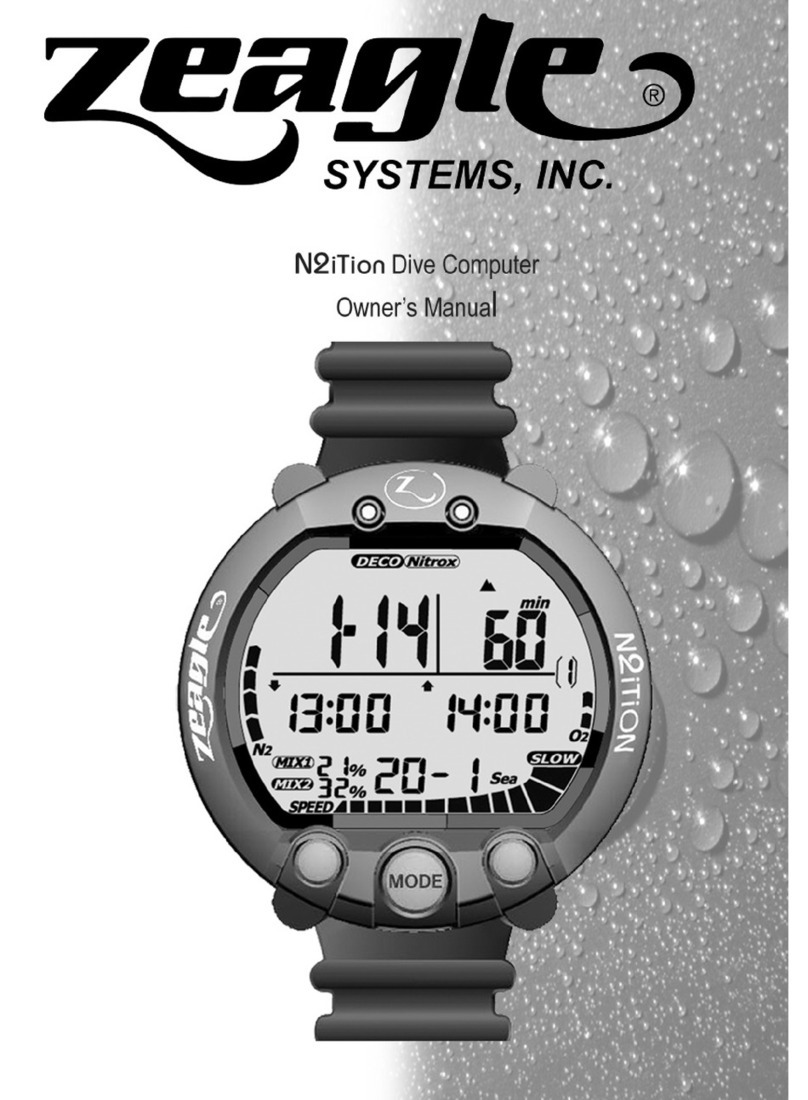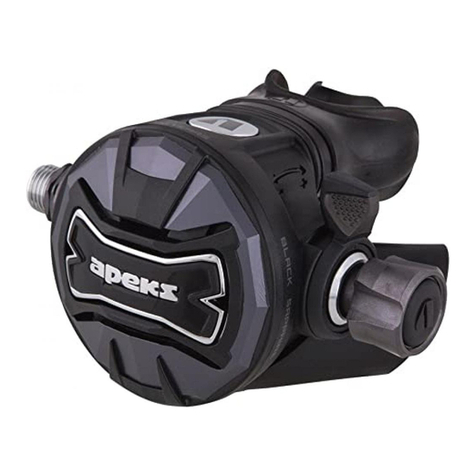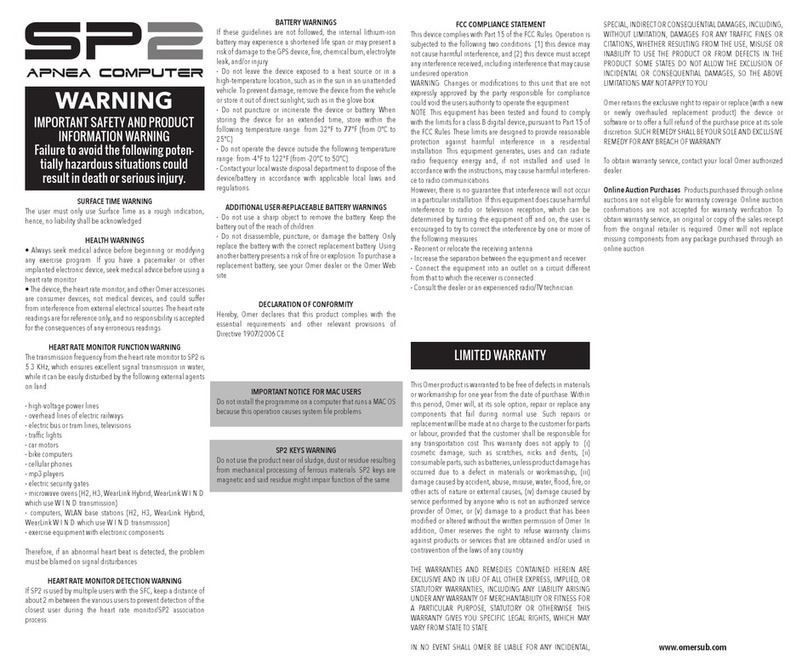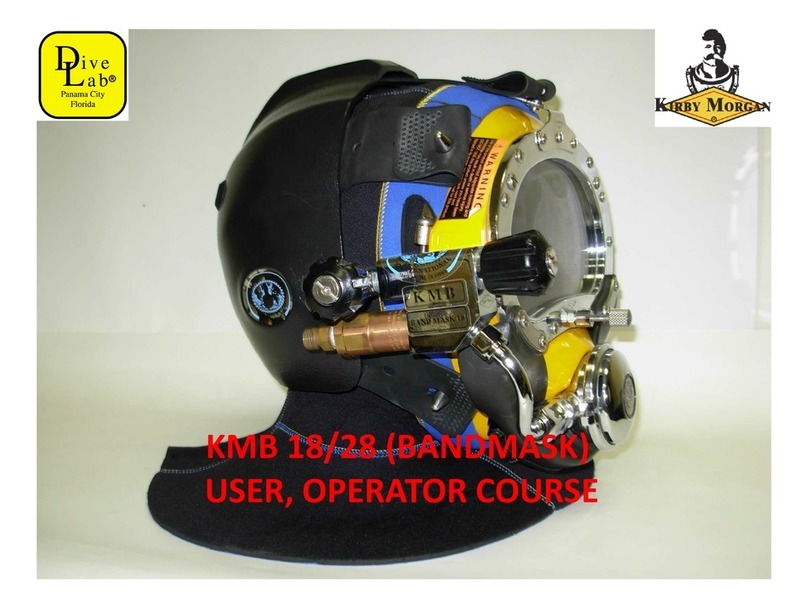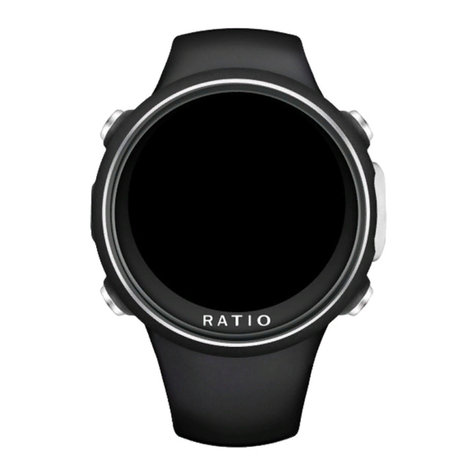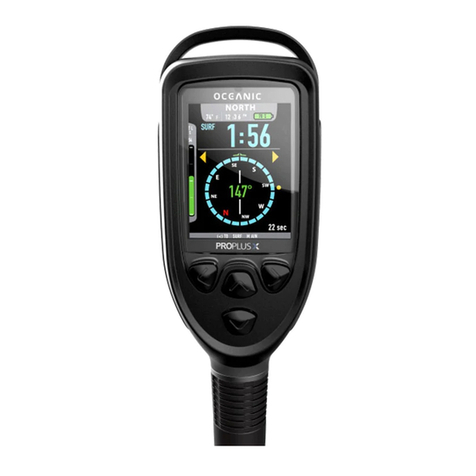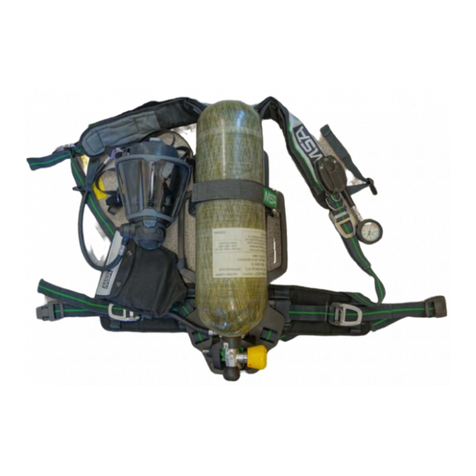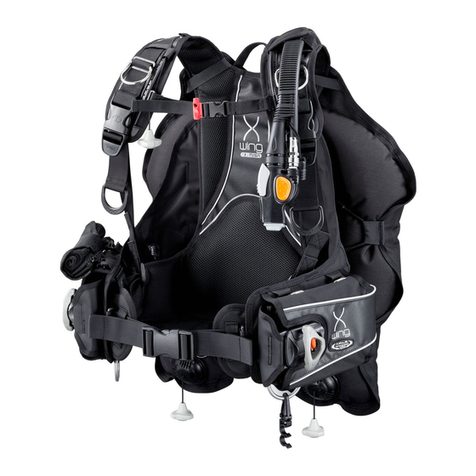2.4 Valve Adjustment Knob (VAK)
2.4.1 LEGEND LX Regulator
The VAK, located opposite of the hose connection on
certain model second stages, adjusts the effort required
to start the air flow at the beginning of the inhalation
cycle. As it is turned “in” (clockwise), the opening effort
will increase. This will make the second stage less sensi-
tive to sudden changes in ambient pressure. Turning the
knob “out” (counter-clockwise) will decrease the opening
effort to make breathing easier.
This adjustment is particularly useful at deeper depths, or in variable conditions
that affect the opening effort of the second stage, such as strong currents or
while using a diver propulsion vehicle (DPV). It will also allow compensation for a
difference in the hydrostatic pressure and the centre of your lungs, such as
when you are in a head-down position. You can use the VAK to tune your regu-
lator to maintain its peak performance throughout the course of your dive, or
you can leave it set in its mid-range position and dive with as you would any non-
adjustable second stage.
2.4.2. Kronos Second Stage Adjustment: „Dual Cam‰.
The Dual Cam patented adjustment system combines
both the VAS and the VAK.
In the “+” position: the VAS is maximum and the VAK is
minimum (turned out). This gives optimum performance
(average: 1.2j/l according EN 250).
In the “-“ position: the VAS is minimum and the VAK is maximum (turned in).
This reduces performance to the maximum allowed by EN 250 (average:
2.8j/l). This offers a very effective pre-dive position.
2.4.3 Mikron Regulator
The VAK, located opposite of the hose connection on
certain model second stages, adjusts the effort required
to start the air flow at the beginning of the inhalation
cycle. As it is turned “in” (clockwise), the opening effort
will increase. This will make the second stage less sensi-
tive to sudden changes in ambient pressure. Turning the
knob “out” (counter-clockwise) will decrease the opening
effort to make breathing easier.
This adjustment is particularly useful at deeper depths, or in variable conditions
that affect the opening effort of the second stage, such as strong currents or
9Back to the contents

